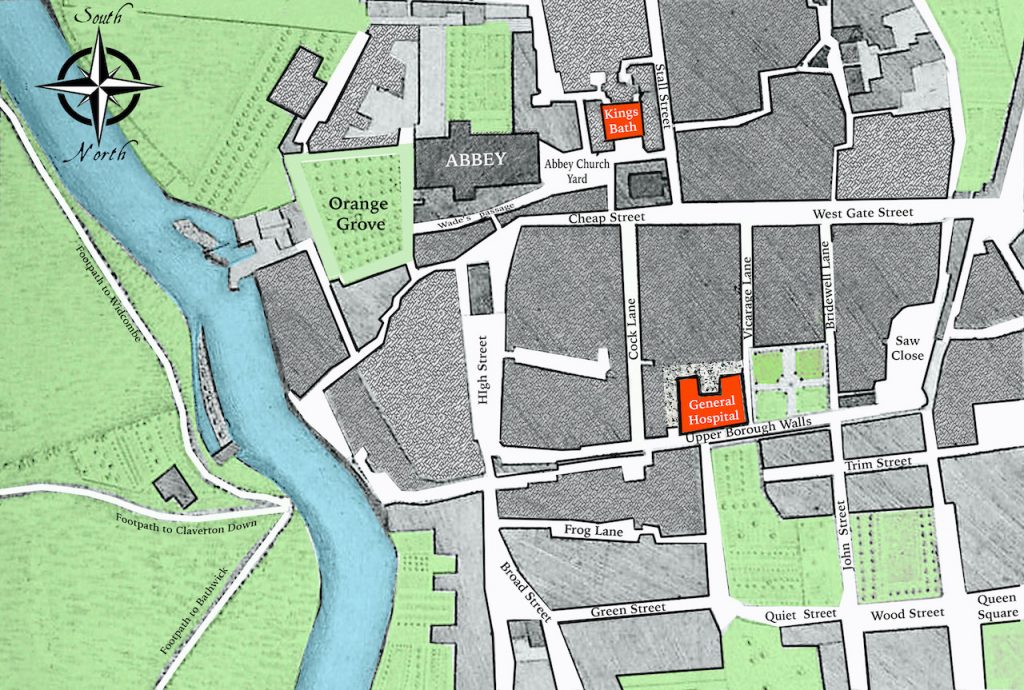As part of Bath Medical Museum’s Digital Curation Strategy, we have curated two virtual tours of the former Royal Mineral Water Hospital building, known locally as the Min. The 360° model represents the building’s life as a hospital shortly after its foundation in the mid-18th century. Just before the building’s closure in 2019, we commissioned a 360° digital photographic tour of the rooms and corridors.
The Virtual Tour
The museum’s curator and historical adviser has teamed up with creative technologist Dr Lee Scott and Harry Wyatt, an architectural designer and 3D modeller, to construct a virtual tour of the hospital as it was at the time of opening in 1742. Making use of the building’s original and more recent architectural plans, Harry has completed both the exterior and interior of the building and it is now possible to make a virtual visit to most of the rooms in the hospital as they might have looked in the mid 18th century.
Inevitably there had to be considerable guesswork when reconstructing the historic interiors because there are only a handful of contemporary illustrations of rooms in 18th century British hospitals and these are mostly of wards. None exist for the Bath hospital’s interiors and even John Wood’s original plans were changed during the building’s construction and the rooms were repurposed several times in the early years. The interiors are therefore largely conjectural, but represent what is known to have been present in the hospital in the mid 18th century.
Visitors can enter the Georgian hospital through the original front door and will find themselves in the vestibule which leads onto the corridors and the various rooms. The rooms and wards can be navigated in 360°. It is possible to click on ‘hotspots’ in the rooms, which will open links to associated artefacts in the museum’s collection or descriptive text. Some rooms also have a speaker icon which opens an imagined audio recording of a staff member working in the hospital in its early years. The characters are spoken by actors but their dialogue is based on descriptions found in the records of the hospital and give an idea of what life was like there in the 1740s.
This is a plan of the hospital’s environs when it opened in 1742, based on a contemporary map. Much of the city centre was redesigned during the ensuing century.
Find out more about the project by reading Harry’s article Preserving the Min: Bringing the Royal Mineral Water Hospital to life.
Credits
Narrations
Narrations by Next Stage Co and others:
Jerry Peirce, Surgeon – Brian Hudd
John Morris, Apothecary – Simon Lawson
Edward Brett, Register – Martin Allsop
Ralph Allen, Governor – Brian Fisher
Mary Scriggins, Patient – Alison Paine
Nurse Hubbard – Caroline Groom
William Oliver, Physician – Brian Hudd
Henry Smith, Brewer and Baker – Lewis Rogers
Production Team
3D Modelling and Architectural Research – Harry Wyatt
Virtual Tour Development – Dr Lee Scott
Curation and Historical Research – Dr Roger Rolls
Production Management – Paul Thomas

